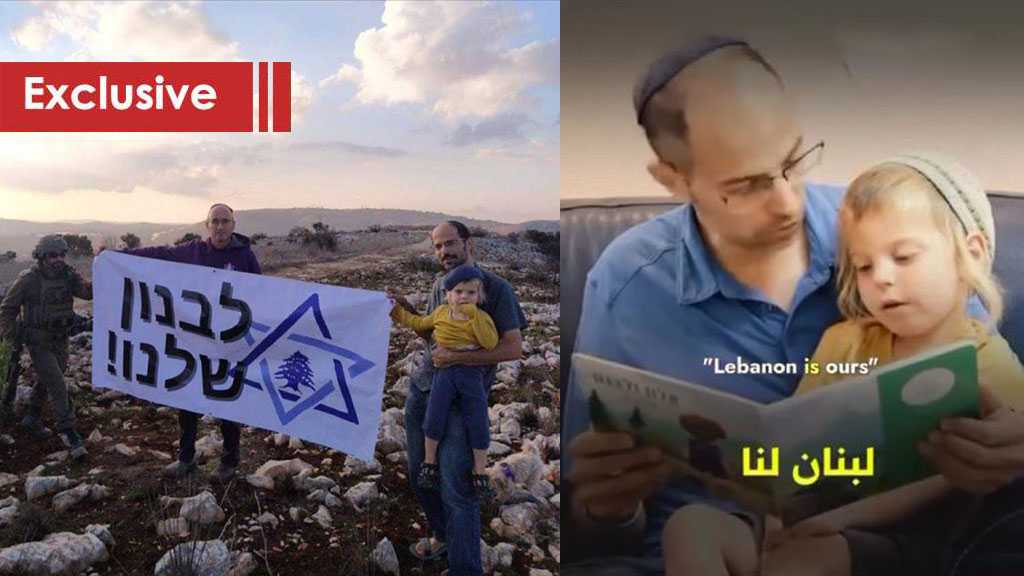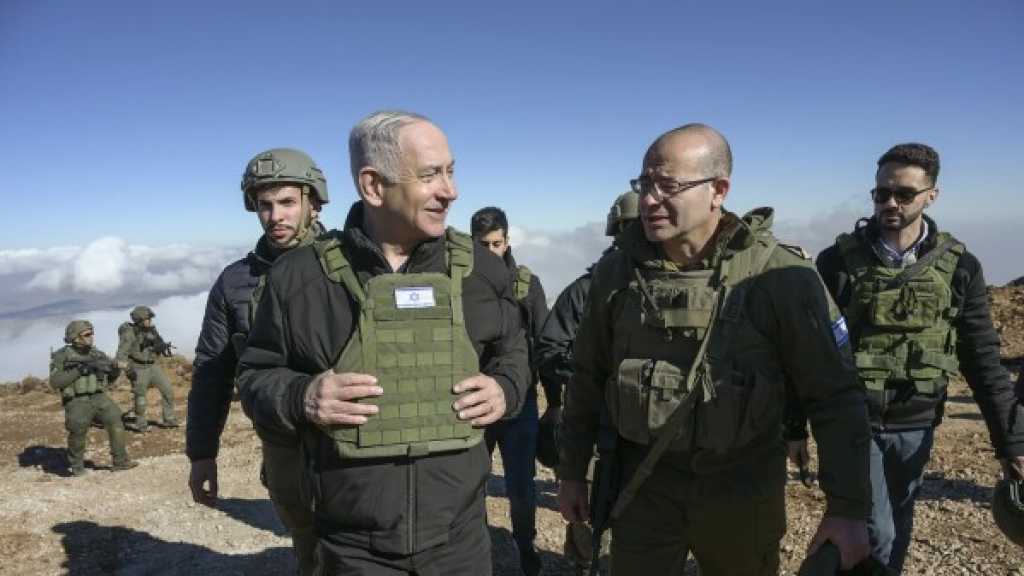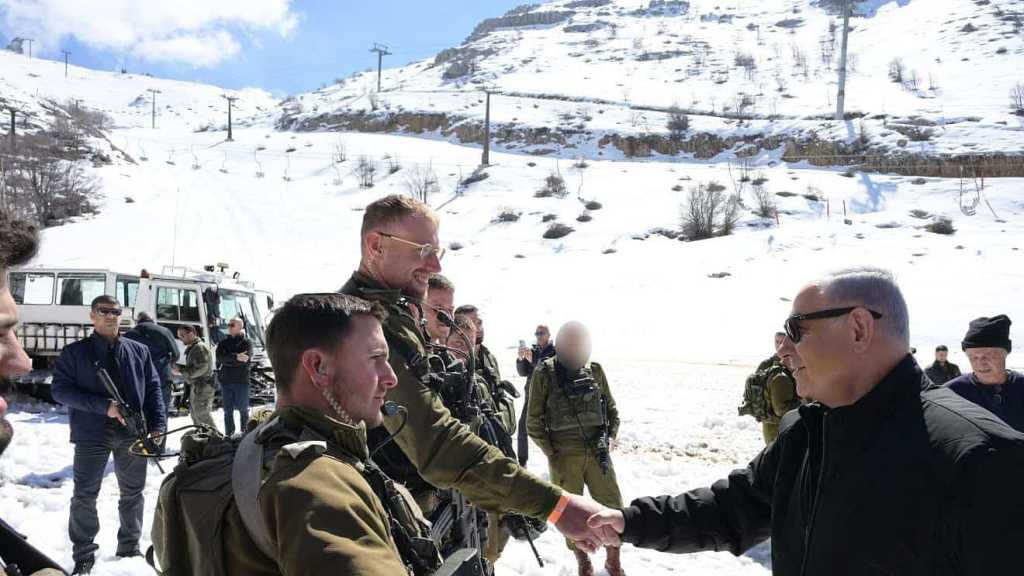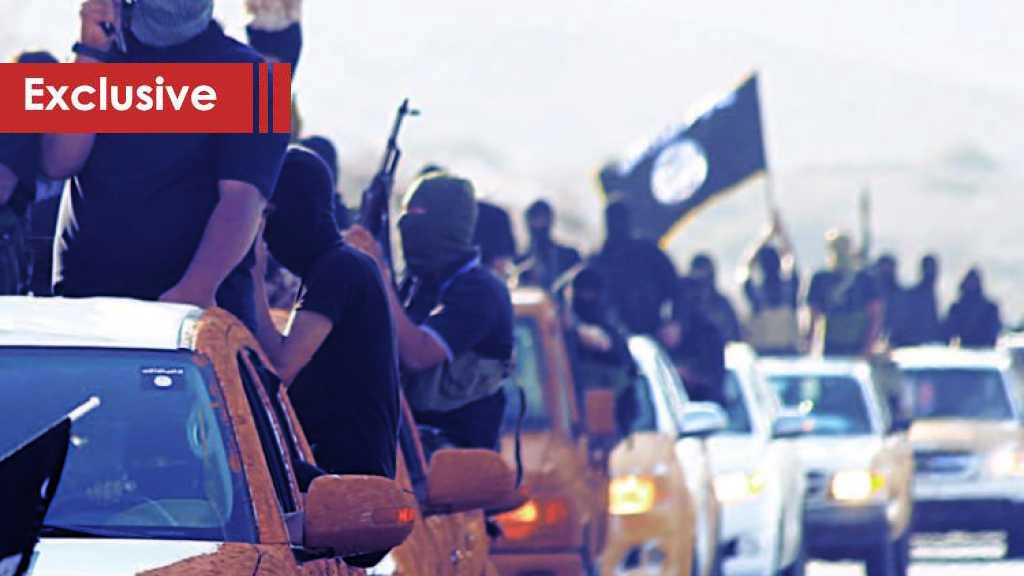
The Second Liberation: Sayyed Nasrallah’s Military Role & Details about Coordination between Resistance & Army
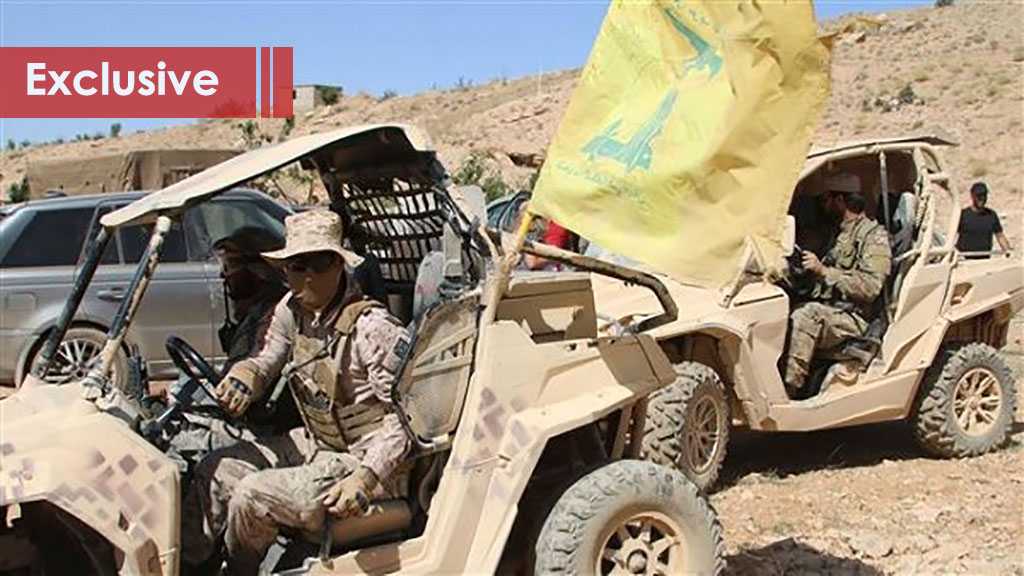
By Maysaa Moukaddem
On the second anniversary of the battle to liberate Lebanon’s Eastern Mountain Range from terrorists, the Islamic Resistance, for the first time, reveals the full version of events to Al-Ahed News website. This includes military and field details.
It all began in 2012 starting from Tell Mando to al-Qusayr to the Jaroud. Al-Ahed published the story successively accompanied by special videos and maps in cooperation with the media wing of the Islamic Resistance.
In the third part, we focus on the battles against the Takfiris in the Eastern Mountain Range from June 2014 until the time of the Second Liberation on August 28, 2017. We also shed light on how the secretary general of Hezbollah intervened in charting the course of the military operations prior to the Second Liberation. Furthermore, the Islamic Resistance reveals to Al-Ahed News Website how the resistance and the Lebanese army coordinated to eliminate Daesh.
Both sides avoided Lebanon’s Eastern Mountain Range at first due to its harsh climate. With the end of the Qalamoun operations in June 2014, armed groups began to establish a presence along the Eastern Mountain Range overlooking Lebanese areas. The groups emerged on the hills overlooking Brital, specifically in the Harf Al-Hawa area (2400 meters high and overlooks the entire Bekaa Valley as well as the resistance camps. It belongs to the barren area of Brital and is connected to the Tfail barren area. Traditionally, Syrian shepherds herded in this area).
* Qaem 1 and Qaem 2
In June 2014, the insurgents extended their area of control from Zabadani, the barren areas of Zabadani, and Bloudan until the Barada Valley. That is, there was a line of communication from Arsal to Ghouta to Wadi Barada. The Barda Valley is connected to Eastern Ghouta and thus to the western Qalamoun mountain range extending up to Badia, Al-Tanf and Al-Nasiriyah. It was necessary to attempt to separate these barren areas. So Tfail was chosen. The height difference between the points where the terrorists were situated and one of the resistance’s centers was about 1000 meters. The leadership of the resistance made the decision to seize the peaks. Hence, a night infiltration operation was carried out by the Taabia [mobilization] units. Meanwhile, the brothers in Qalamoun had reached the border of Tfail.
The brothers in Qalamoun decided to carry out an offensive maneuver on the Tfail area and the areas surrounding it and capture them. The battle lasted for about four days until the resistance’s defensive positions were connected. The attack was carried out on two axes. A group of barriers, most notably the Nimrod Castle, Mohtaraqa Al-Safra and Qaba Al-Khatem were captured. From the other side, the Al-Safra area was seized. One of the most prominent results of this operation was that it separated the deployment of the militants in the area of Wadi Barada, which is connected to Eastern Ghouta, and the entire Joroud Arsal.
Nearly a month later in July 2014, the decision was made for the brothers to attack from Qalamoun towards Talat Musa. Other forces would also attack from the Lebanese side towards the areas of Aqbat al-Baydah, Aqbat al-Zaytoonah, al-Khesh'at, Ras Wadi al-Hawa and Ard al-Keshk land. The forces would then meet at one of the areas.
Among the highest of these areas are Aqbat al-Zaytoonah (2500 meters high) and Aqbat al-Baydah (2450 meters high). At these altitudes, oxygen levels in the air drop, making it difficult to breathe. Hence, the climate played a prominent role.
Due to certain circumstances the force from Qalamoun did not attack as planned, but the other force from the Lebanese side attacked and recorded an achievement (the area is on the outskirts of Baalbek). The resistance fighters attacked 32 militant positions, capturing 28. Several fighters were martyred in this operation (Qaem 1 and Qaem 2).
Now, the resistance had an axis adjacent to the barren areas of Brital and another adjacent to the barren areas of Baalbek-Nahle, but the area between the two axes is not connected.
* Amir 1: the dimensions of the security threat to Lebanon
In August 2014, the Lebanese army arrested one of the main officers of the terrorist groups and from one of the most dangerous combat formations (Imad Juma’a aka Abu Ahmad, the commander of the Fajr al-Islam Brigade.) At the time, the deployment of the army formed a semi-siege around Arsal and some valleys. (Around 200,000 armed men and their families were in the Arsal area and in the vicinity of the camps.)
The resistance had a timetable prepared before the Amir 1 Operation. In the winter of 2014-2015, the storm Zeina hit. In some places, the snow reached up to10 meters. Some of the brothers were injured and almost martyred due to the snow and frostbite. Some of the brothers lost their sight while others suffered frostbite. At one point the temperature along one of the axes dropped to -20°C. Water bottles froze. And in order to save drinking water, the brothers had to put the bottles in a large bowl of water on low heat. The resistance fighters there made use of new means of transportations such as the “Ski-Doo” snowmobiles. It was one of the most important experiences for the resistance. It was an important stage worthy of pride. Firmness in these positions and defending the hilltops was an achievement.
At that time, skirmishes between the resistance and the terrorist groups continued until the summer of 2015. Concurrently, the Jaish al-Fatah [the Army of Conquest] was formed in Idlib, and Abu Malek al-Talli held a meeting with all the fighting formations and began to prepare for what he called the "Conquest of Damascus".
The leadership decided to expel militants from all the barrens extending from Tfail to the barren areas of Baalbek. Areas of responsibility and operation were assigned on both the Lebanese and Syrian sides. There were formations from various Hezbollah units on both sides since the front stretched for 28 kilometers.
The operation took place on two sides (274 km on the Lebanese side and 500 km on the Syrian side). The methods and types of actions varied, some of which were similar to the resistance’s regular operations (infiltration by infantry formations and attacking some sensitive barriers).
There were two stages: the loud stage and the silent stage. The silent stage involved taking advantage of the methods used by the resistance. Some forces infiltrate and clash with small formations before occupying these points and barriers (the geographical barriers varied: key, fundamental and critical) in addition to their camps.
During the Amir 1 Operation, militants numbered 3,000 and were fortified in caves. This number increased or decreased depending on the circumstances. The militants had about 200,000 fighters in the camps in Arsal.
This area posed a major threat to Lebanon. Booby-trapped cars designed to be detonated among civilians passed through this area. After its liberation, a number of explosive factories were found in the area, including booby-trapped cars with Lebanese plate numbers.
Before the divisions among the terrorist organizations in the region, groupings consisted of Al-Nusra, Daesh, Saraya Ahl al-Sham and the Free Syrian Army.
On May 2, 2015, the terrorists attacked al-Jubba. Two resistance fighters were martyred. During that time, the brothers in the resistance infiltrated Qurnat al-Nahla (Harf al-Dar camp). On the way back, the force was exposed and clashes ensued. At this silent stage, several infiltration attempts were carried out followed by clashes along a 28 kilometer area. But one of the most important points infiltrated was Qurnat al-Nahla, which overlooked the Musharraf hill. The infiltration led to the collapse of the militants. The resistance launched offensive operations in Mawadeen, Mashrou al-Akhdar, Harf al-Dashara and Mashrou al-Khodar. In Harf al-Dashara, fierce clashes took place. Four resistance fighters were wounded in Manzila and one fighter was martyred in the Shmas Ain al-Ward area. The force carried on attacking towards Harf Jwar Al-Inab and reached the al-Omda camp belonging to the Saraya Ahl al-Sham.
In the meantime, other resistance units infiltrated towards Qornet Abd al-Haq, while the brothers in Qalamoun took control of Talat Musa.
One of the most important features of the Amir 1 Operation was that it liberated nearly 500 km causing Jaish al-Fatah to lose hope. The operation also eliminated the threat from the area of Brital and Baalbek and closed many of the crossings. Hence, reducing the threat to Lebanon’s security.
* Amir 2: the final stand of the militants
A few days later, the leadership of the resistance decided to complete the offensive towards the barren areas of Arsal and encircle the terrorists as much as possible. An operation called Amir 2 was carried out. Fierce fighting with the terrorist took place in the area of Harf al-Daboul and Qurnat al-Rasif.
As a result of this operation, the resistance fighters reached Arsal barren areas. Al-Rahwa plain was fully captured and the Wadi Al-Khail - Al-Rahwa triangle that threatened Qalamoun was cut off. Jord Nahla and Younin were fully secured. Liaison with the Lebanese army was achieved.
The Amir 2 operation was characterized by the diversity of the working methods from silent to loud and the multiplicity of tactics (envelopment, frontal assault, encirclement, infiltration).
The problem for the militants was that they could not understand the area tactically and read the advantages each of the barriers provides. Therefore, they could not keep up with the resistance’s maneuvers. The resistance’s maneuvers were more successful because the resistance was able to significantly analyze the area at a tactical or operational level and benefited from the methods of work and types of maneuvers used by the enemy. The methods and intelligence behind the maneuvers gave the resistance the advantage of speedy operations with the presence of many fortifications.
* 2017 … to begin with Daesh or Nusra?
In 2016, the resistance was preparing for Operation Sadiq Al Mohammed. Zabadani was chosen. In 2017, it was decided that an attack should be launched on the eastern region to end the Takfiri presence for several reasons, including the elimination of the threat it posed to security.
There were many options, including to start the operation from the side where the Daesh terror organization is positioned and then continue towards Nusra, or to start from where the Nusra militants were situated and then continue towards Daesh. In the month of Ramadan in 2017, plans to start the fighting from Daesh side got underway. We faced a range of difficulties on the battlefield.
The resistance worked to stabilize the defense line of the Lebanese army below Arsal for fear of terrorists rushing towards Al-Labweh. The army had set up roadblocks at the crossings (the Wadi Hamid crossing, Wadi Ra'yan, and Wadi Hamid).
* Sayyed Nasrallah gets involved in the details of the military operation
During the Eastern Mountain Range operations, His Eminence the secretary general of Hezbollah was tactically involved. He called a meeting and asked for an explanation of every maneuver, every idea in detail.
In previous operations, the secretary general interfered at the operational level from a general standpoint. But in this instance, the secretary general asked for an explanation to the whole operation. He listened to all the details associated with the operation. The secretary general got involved in the manner and the types of maneuvers, the infantry faction, how to go around and analyze the area.
During this meeting with the leaders of the resistance responsible for the Eastern Range operations, His Eminence laid down a set of restrictions and limitations, one of which was that civilians should not be attacked "especially when it comes to the [refugee] camps. Even if they fired at us from the camps, we try not to respond." The other restriction was that if the resistance fighters were forced to respond to the source of the fire from the direction of the civilians, gunfire should only come accurate and focused weapons, so that it precisely responds to the source of the fire without any error. Even this kind of response, needed special permission.
Sayyed remained with us during all the operations. He was following up on everything with us. During the meeting with his officers, he spoke using military terminology. He behaved as a military commander addressing the scene on the battlefield that was unfolding before him. He set limitations and restrictions and gave his orders to his officers. Back then, Sayyed gave us the time we needed and more. He told us you are not pressed with time.
Sayyed also intervened in determining the line at which resistance should stop in terms of the distance from the camps. Back then these points were recorded. We had to walk and go around a distance of 6 km at night (the soldier does not see in front of him while he is carrying his equipment and weapons).
* Eliminating the Nusra Front
The main objective of this operation was to completely eradicate the Nusra Front and end its existence as well as to liberate the entire Lebanese border, making Lebanon the first country to be declared free from terrorists. One of the underlying objectives of the operation was to pressure the Nusra Front, specifically Abu Malek al-Talli. By doing so, we sought to uncover the fate of the Lebanese soldiers captured at the time as well as our fellow prisoners in Idlib. This objective was implied and not made public.
The enemy forces were mainly composed of Jabhat al-Nusra, Saraya Ahl al-Sham and other formations. The total number of militants was about 700 fighters from the two formations. However, this number could increase to 3000 armed men at any moment (the reason is they rely on manpower from the camps. These camps were about 6 to 7 km away from the starting points of the resistance. However, the resistance was unable to bombard the camps because of the limitations and restrictions, making these camps focal points for the militants’ support line.).
Accordingly, the resistance established a firing base in Wadi Hamid. The resistance fighters sought to cross from the Aqaba al-Mabida area or from Dahr al-Araba. There were several types of military tactics that were used:
Frontal assault: attacking from the south to the north, that is the multiplicity of axes.
Bypass maneuver: the Dahr al-Hawa area was the main target.
Envelopment, which is a maneuver that passeed through Wadi Daqiq and reaches Dahr al-Safa-Al-Lazabah. As the clashes got underway, there were two main barriers along the contact line, Al-Anzah barrier and the Dahr al-Hawa barrier, in addition to others.
The operation began on July 20, 2017. The resistance took advantage of Wadi Daqiq and advanced towards it. They carried out a bypass maneuver. From Friday through Sunday, things were practically over from a military standpoint.
On July 21, we were trying to encircle the militants along than one front. On July 22, we reached al-Anzah hills and Hqab al-Tabba. On July 23, we took control of Haqab el-Khail and the area adjacent to it. On July 25, we carried out an offensive operation and faced fierce fighting. We took control of Sarj al-Kherbe and Talaat al-Nassab. On that day, a ceasefire was requested on the basis that the negotiations had yielded results. On the night of July 26, three of the insurgents lost their way and reached the armed checkpoints and were captured. On the night of July 26, three resistance fighters lost their way and reached militant positions. They were captured.
On July 31, a negotiating committee comprised of the head of Hezbollah's liaison and coordination unit, Hajj Wafik Safa, and the General Director of the General Directorate of General Security, Major General Abbas Ibrahim, arrived at our position at night. They told us, "these people have grown bolder, and they do not want to negotiate anymore."
We told them, "Stop the negotiations, and we will continue our offensive operations."
At night, we laid the groundwork for the offensive in a bid to wrap things up as directed by the leadership.
We took measures to prepare the area and the fire bases. We prepared for the offensive. At this point, Abu Malek al-Talli was stationed at the Wadi al-Dam area. The brothers in Qalamoun had completed their battle (when the resistance took control of Dahr al-Hawa, they oversaw its supply lines, and thus it fell militarily. The brothers in Qalamoun reached all the positions they needed to get to comfortably). The fierce battles the resistance faced in Qalamoun were mainly in the Al-Karra area and before that in the Burkan Hill. As for the rest of the positions such as Harf Wadi al-Deb, Qalaat al-Khail and Qalat al-Hos, they captured them almost without a fight.
On the Lebanese side, the main and concentrated fighting took place in Dahr al-Hawa, Dahr al-Safa-Al-Lazabah. However, there was no fighting in al-Anzah. On August 1, 2017, the militants had begun to withdraw, but the resistance did not advance to the heart of the valley at the request of the leadership because there were still civilians at the camp.
After the resistance took control of Dahr al-Hawa, the Saraya Ahl al-Sham announced its surrender. We had already captured several of their fighters. We gave them ten bodies when they declared their intention to withdraw from the battle. One of the conditions the resistance set for the exit of the Nusra Front was that they inform us about the places of the bodies of martyrs and to release the prisoners. Hence, the entire area was clear of Nusra Front and Free Syrian Army militants.
* Full coordination between the resistance and the Lebanese army to eliminate Daesh
As for Daesh, the Lebanese army announced its intention to take over the area on August 3. The army took over positions previously held by the resistance including the liberated areas as part of the full coordination. It was almost a joint operation between the resistance and the army to eliminate Daesh. Resistance officers and the Lebanese army discussed the plan, and it was agreed that the most important barrier was Al-Khanazir Hill. The plan entailed that the army take control of all Daesh-held areas as soon as the Al-Khanazir Hill falls. Daesh had already lost its ability to reinforce Al-Khanazir Hill. Consequently, upon the arrival of the Lebanese army, there were no clashes on the northern side, that is from Joroud Arsal.
During the If You Return, We Return Operation, the resistance employed a set of tactics that included infiltration due to the rough terrain, as well as a series of maneuvers, and multiple directions of action.
If You Return, We Return Operation began almost a week after the Sadiq Al Mohammed Operation. During the offensive, Daesh militants were fighting while some surrendered at al-Zimrani crossing.
At the Lebanese side, the army used very large formations (brigades and regiments, 50 155 mm Gun M1, as well as rocket launchers). On the Syrian side, the resistance was attacking from several directions. The multiplicity of axes and sides confused the armed groups.
These operations led to the liberation of the entire area and the freeing of prisoners (for the first time in the history of Daesh it released prisoners). Daesh militants had their families and civilians with them. Here the leadership’s role emerged to end the battle (where would the families go?). This battle could not be ended militarily, especially since Daesh terrorists had no place to go (Palmyra [Tadmor] and Mahin were liberated, and they had problems with what they called Wali Homs and Wali Damascus). This is where the strategic administration of the battle and the administration of the negotiation process came in. An exit strategy was drawn up. The way the battle ended was genius.
One of the difficulties the resistance faced was the nature of the terrain (hills, mountains and hilltops that reach up to 2500 m) in addition to poor roads.
* Summary
This battle began gradually with the arrival of the militants to Al-Qausayr in 2013. It would eventually see the militants hit rock bottom and finally their project would mark its demise in 2017. This is four years of fighting in which the methods of operation varied between defensive and offensive and special operations (ambushes, planting explosives, guided shootings, targeting some main militant players).
One of the defining features of this battle was that the resistance fighters fought in different types of environments (urban, mountainous, near forests) with the ability to adapt to the climate as well as these environmental conditions. Another characteristic of the battle was the extent to which the preparedness of the resistance outweighed that of the terrorist groups. Also, the resistance combined a range of weapons, especially in Al-Qusayr as well as west and east of the river. They also integrated armored vehicles and the infantry. Moreover, the resistance and the army successfully combined their tactics, and many types of maneuvers.
Comments
